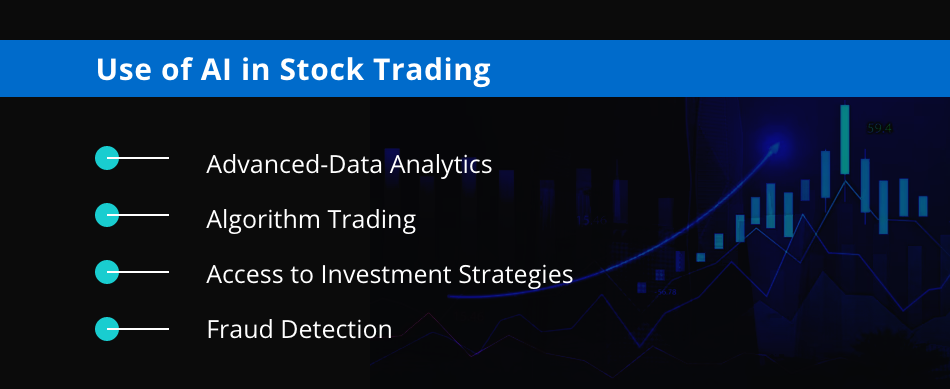20 Best Facts For Selecting AI Stock Trading Platform Websites
20 Best Facts For Selecting AI Stock Trading Platform Websites
Blog Article
Top 10 Tips To Assess The Integration And Compatibility Of Ai-Based Stock Prediction And Trading Platforms
AI stock trading platforms that can predict and analyze stocks using AI must have compatibility with one another. A platform that seamlessly integrates with the tools, systems and workflows of your business can boost productivity and efficiency. Here are our top 10 suggestions on how you can assess the compatibility and the integration of these platforms.
1. Check Brokerage Integration
Supported Brokers: Make sure the platform is compatible with your broker account or trading platform.
Trade execution: Check whether your platform permits you to make trades directly through the integrated broker.
Account synchronization. Check if the platform permits you to connect your account balances in real-time, as well as positions and transactions.
2. Examine the availability of APIs
API access: Make sure the platform offers an API (Application Programming Interface), which allows developers to develop customized tools and automate workflows.
API documentation: Check if the API is well-documented with explicit examples and cases of use.
Rate Limits: Verify the API's rate limits to confirm they're reasonable and can accommodate your expected usage.
3. Assess Third-Party Integration
Popular tools: Find out whether your platform is compatible with popular tools like Google Sheets or Excel.
Export and import of data. Be sure your platform can import or export data from or to any other tool.
Extensions/Plugins: Determine if your platform can support extensions or plugins for further capabilities.
4. Test Compatibility using Operating Systems
Desktop compatibility: Ensure that your platform is compatible with your preferred operating system (Windows, macOS or Linux).
Mobile compatibility. Find out if you can download the app using iOS or Android.
Web-based access (for greater flexibility) Check that the platform can be accessed via a webbrowser.
5. Evaluating Data Integrity Capabilities
Data sources: Ensure the platform integrates with multiple data sources (e.g., market data sources, news feeds, social media sentiment).
Real-time analytics: Make sure your platform supports real-time analysis.
Import historical data: Check whether the platform permits import of historical data to backtest or for analysis.
6. Evaluation of cloud and on-premise compatibility
Cloud-based Platforms: The platform should be available anywhere there is an internet connection.
On-premises deployment: Make sure you know the platform you're using supports on-premises deployment.
Hybrid options: Check whether the platform has the option of a hybrid model, which combines cloud and on-premise capabilities.
7. Look for Cross Platform Syncronization
Device synchronization. Make sure that settings and data are synchronized across all platforms (desktops mobiles, tablets).
Verify that changes made on a device are instantly reflected on another.
Access offline: Determine if the platform allows restricted functionality or data access in offline mode.
8. Examine the compatibility of trading Strategies
Algorithmic trading: Check that the platform supports algorithmic or automated trading strategies.
Custom indicators. Find out if the platform permits you to use scripts or technical indicators.
Backtesting strategies: Find out if the platform supports backtesting trading strategies with historical data.
9. Examine Security and Compliance
Data encryption - Make sure that your system is using encryption for all your data, in transit as well as when it is at rest.
Authentication: Check whether the platform supports secure authentication methods (e.g. two-factor authentication).
Compliance with regulations: Make sure that the platform meets relevant laws (e.g., GDPR, FINRA, SEC).
10. Test Scalability and Performance
Scalability: Make sure the platform can handle increasing amounts of data and users as your needs increase.
Performance under load: Check whether the platform performs as expected in high-volatility situations.
Utilization of resources: Ensure that your system makes use of system resources such as CPU, memory and bandwidth.
Bonus Tips:
User feedback: Make use of user testimonials to evaluate the capabilities of integration on platforms.
Free trial period: You can try a demo or a free trial to test the platform's compatibility with your existing workflows and tools.
Customer Support: The platform must provide a solid support service in the event of integration problems.
These tips will help you evaluate the compatibility and integration capabilities of AI analysis and stock prediction platforms. This will help ensure that they integrate seamlessly with your existing platforms and boost your efficiency in trading. Have a look at the recommended helpful resource on using ai to trade stocks for site recommendations including ai chart analysis, ai chart analysis, ai stock trading app, ai stock picker, ai trading, ai for stock predictions, ai investment app, ai investment platform, best ai for trading, options ai and more.
Top 10 Tips On How To Evaluate The Speed And Latency Ai Technology For Predicting And Analyzing Stocks
The speed and latency of the trading platform are important factors to be considered, especially when it comes to active traders or high-frequency investors, as well as algorithmic ones. Milliseconds of delay could impact trade execution and profitability. Here are 10 of the best ways to measure the speed and the latency of platforms.
1. Evaluate the Real-Time Data Feeds
Data delivery: Make sure that the platform can to deliver data in real-time, with a minimal delay (e.g. less than a millisecond).
Find out the distance of the source to most important exchanges.
Data compression: Make sure that the platform is using efficient data compression to speed data delivery.
2. Test Trade Execution Time
Time to process orders: Determine how fast the platform process and executes trades after you submit an order.
Direct market access: Ensure that the platform allows direct orders to be made to the exchange.
Look for more detailed reporting on execution, which includes timestamps and confirmations of the order.
3. Examine the Platform's Responsiveness
User interface (UI or speed of user interface) It is a measure of how quickly the UI of a platform responds to the inputs you make (e.g. clicking buttons, loading graphs).
Chart updates: Make sure that visualisations and charts update in real-time, with no lag.
Mobile app performance When you're using a mobile app make sure it runs just as fast as a desktop version.
4. Find out if the network infrastructure is low-latency.
Server Locations: Select servers that are low-latency, and located near major financial centers, or exchanges.
Look for colocation options. These services allow you to host your algorithms near to the exchange.
High-speed network: Determine if the platform utilizes high-speed fibre-optic networks, or other low latency technologies.
5. Assess the Backtesting and Simulation speed
Find out how quickly the platform processes and analyzes the historical data.
Simultaneous simulation of trades The platform must be capable of simulated live trading with no obvious delays.
Parallel processing: Find out whether the platform makes use of distributed computing or parallel processing to speed up complex calculations.
6. Assess API Latency
API responses: Find out how fast APIs can respond to queries (e.g. getting data from the platform, placing orders).
Limits on rates. Examine the API's rate limits in order to avoid delays during high-frequency trading.
WebSocket support: Check if the platform uses WebSocket protocols for real-time, low-latency streaming of data.
7. Test stability of the platform under load
High-volume trading: Simulate high-volume trading scenarios in order to determine if the platform remains stable and responsive.
Market volatility: Ensure that the platform can handle price fluctuations during times that are high-risk.
Stress testing: Check if the platform offers tools for stress testing your strategies in extreme circumstances.
8. Review Connectivity and Network
Internet speed requirements: Make sure that your connection is at the recommended platform speed.
Redundant Connections: To minimize delay, verify that the platform can support redundant internet connections.
VPN latency If you are using the VPN for connection, be sure it doesn't introduce significant delay. Make sure that the service offers alternatives.
9. Check for Speed Enhancement Features
Pre-trade analytics: Make sure that the platform offers pre-trade analytics to improve the speed of execution and order routing.
Smart order routing (SOR) Check that the platform is using SOR to find the fastest and cost-effective execution venues.
Check the platform's tools to monitor and analyse latency in real-time.
Review User Feedback & Benchmarks
Reviews from users: Perform studies to determine the platform's speed and latency.
Third-party benchmarks by third parties. Find benchmarks that are independent or reviews that evaluate the speed of a platform with other platforms.
Case studies: Determine whether a platform offers case studies or testimonies that highlight the low-latency features.
Bonus Tips
Try the trial for free or demo period to test your platform’s speed and latency under real-world conditions.
Customer support: Make sure the platform has customer support to optimize latency or other issues.
Hardware requirements. Make sure the platform is compatible with the hardware you are using for example, high-performance computers.
By following these tips, you can effectively assess the speed and latency of AI platform for predicting or analyzing stocks, ensuring you choose one that is compatible with your requirements for trading and reduces the time it takes to complete. A low latency is essential for algorithmic or high-frequency traders where even small delays could be a significant factor in their profits. Check out the top ai options blog for more examples including can ai predict stock market, chart analysis ai, stock trading ai, how to use ai for copyright trading, ai options trading, how to use ai for stock trading, best ai stocks to buy now, best ai trading platform, stock predictor, stock predictor and more.